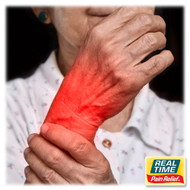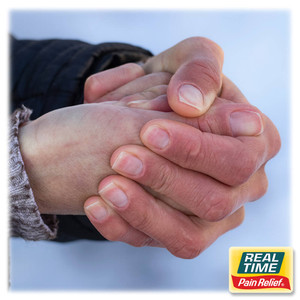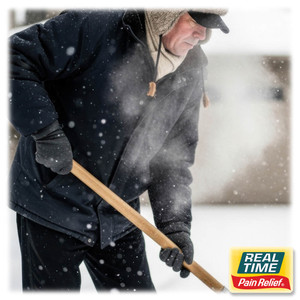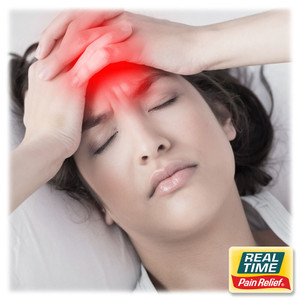Seasonal Joint Stiffness: Managing Cold-Weather Arthritis Flares
Posted by Dennis R Escalera on 1st Oct 2025
Introduction
As the air grows cooler and the days become shorter, many people living with arthritis begin to notice a familiar challenge: increased joint stiffness and pain. While autumn brings beautiful scenery, it can also mean discomfort for those whose joints are sensitive to weather changes. People often report that their arthritis symptoms worsen when temperatures drop or when barometric pressure shifts before a storm.
Fortunately, there are effective ways to manage these seasonal flares. From understanding why cold weather affects joints, to making practical lifestyle changes, to using topical creams and lotions with nature’s ingredients, individuals can find relief and stay active throughout the colder months.
Why Joints Feel Stiffer in Autumn and Winter
Many people with arthritis claim they can “feel” a change in the weather in their bones. While research is ongoing, several factors are thought to explain why joint pain worsens during colder months:
- Barometric Pressure Changes
- Barometric pressure drops before storms or during seasonal shifts. This decrease may allow tissues around joints to expand, causing pain and stiffness.
- People with arthritis often have less cushioning cartilage, so they feel these pressure changes more intensely.
- Temperature Drops
- Cold air can cause muscles, tendons, and ligaments to tighten. This stiffness puts more strain on joints, making movement uncomfortable.
- Reduced Physical Activity
- Shorter days and cooler weather often lead to less exercise. Lower activity levels can reduce joint lubrication and flexibility.
- Increased Sensitivity to Pain
- Some research suggests nerves may become more sensitive to pain signals in colder weather.
Types of Arthritis Affected by Cold Weather
Not all arthritis conditions respond the same way to weather changes, but many show seasonal flare-ups:
- Osteoarthritis: The most common form, caused by wear-and-tear on cartilage. Cold weather often worsens stiffness and pain.
- Rheumatoid Arthritis: An autoimmune condition that can be aggravated by weather changes due to inflammation.
- Psoriatic Arthritis: Inflammation linked to psoriasis can intensify in cooler, drier months.
- Gout: Though often triggered by diet, some individuals report worse symptoms during seasonal changes.
Daily Habits to Manage Seasonal Joint Stiffness
1. Keep Joints Warm
- Layer clothing: Use thermal wear, scarves, and gloves to protect joints.
- Heating pads or warm baths: Moist heat relaxes muscles and eases stiffness.
- Warm indoor environment: Avoid cold drafts inside the home.
2. Stay Active
- Gentle stretching: Helps maintain flexibility and reduces stiffness.
- Low-impact exercises: Walking, swimming in heated pools, or yoga keep joints moving without excessive strain.
- Routine consistency: Even short daily workouts can reduce stiffness.
3. Prioritize Joint Protection
- Use supportive footwear: Cushioned shoes reduce stress on knees and hips.
- Adaptive tools: Ergonomic utensils and jar openers protect hand joints.
- Joint-friendly posture: Maintain alignment during daily activities.
4. Nutrition for Joint Health
- Omega-3 fatty acids: Found in salmon, flaxseed, and walnuts, these reduce inflammation.
- Vitamin D: Helps bone health and may reduce arthritis pain; lower sunlight in autumn means supplementation may be beneficial.
- Antioxidant-rich foods: Berries, leafy greens, and turmeric combat inflammation.
5. Stress Management
Stress can amplify pain perception. Mind-body practices like deep breathing, meditation, or tai chi may help regulate pain responses and keep flares manageable.
Topical Relief with Nature’s Ingredients
Topical creams and lotions provide targeted comfort by reducing stiffness, soothing pain, and improving flexibility. Many rely on nature’s ingredients with proven benefits for joint discomfort.
Here are some of the most effective:
1. Arnica Montana
- Used for centuries as a natural anti-inflammatory.
- Reduces swelling and discomfort in stiff joints.
- Often included in creams for arthritis and muscle pain.
2. Menthol (from peppermint oil)
- Provides a cooling-to-warming sensation that distracts from pain.
- Improves blood flow to affected areas, helping joints feel more mobile.
3. Capsaicin (from chili peppers)
- Depletes “substance P,” a chemical that transmits pain signals.
- Provides warmth and reduces long-term sensitivity in painful joints.
4. Eucalyptus Oil
- Improves circulation in affected areas.
- Contains compounds that may reduce joint inflammation.
5. Turmeric (Curcumin Extract)
- Strong anti-inflammatory properties.
- Works well when applied topically in combination with absorption-enhancing oils.
6. Aloe Vera and Shea Butter
- Provide hydration and protect skin during dry autumn weather.
- Help reduce irritation for those with sensitive skin or autoimmune-related dryness.
When blended, these ingredients create a synergistic effect, offering multi-dimensional relief—reducing inflammation, improving circulation, warming stiff joints, and protecting skin.
Practical Tips for Autumn Arthritis Care
- Warm-Up Before Movement
- Stretch gently before starting chores, exercise, or outdoor tasks.
- Use a heating pad for 10–15 minutes to loosen stiff joints before activity.
- Modify Activities
- Break tasks into smaller segments with rest in between.
- Avoid overexertion in cold weather, especially when lifting or bending.
- Stay Hydrated
- Cold air can be dehydrating. Proper hydration keeps joints lubricated.
- Sleep Support
- Use supportive pillows and mattresses to reduce nighttime stiffness.
- Keep the bedroom warm but not overly dry.
- Mind the Weather Forecast
- Anticipate barometric changes by adjusting routines.
- Apply topical creams preventatively before weather shifts if symptoms are predictable.
When to See a Healthcare Provider
While most arthritis flares can be managed at home, there are times when medical guidance is necessary. Seek advice if you experience:
- Sudden increase in joint swelling or redness.
- New or severe pain not relieved by home care.
- Difficulty performing daily activities.
- Signs of infection (fever, warmth, or pus in joints).
Healthcare professionals may adjust medications, recommend physical therapy, or suggest complementary treatments.
The Role of Nature’s Ingredients in a Holistic Approach
Cold-weather stiffness can be managed best by combining daily habits with topical care. Lifestyle practices keep joints flexible, while creams and lotions enriched with nature’s ingredients provide immediate relief when flares strike. Unlike oral pain medications, topicals act locally with fewer systemic side effects, making them a safe addition to arthritis management routines.
By incorporating ingredients like arnica, menthol, capsaicin, turmeric, and eucalyptus, individuals can support circulation, reduce inflammation, and maintain mobility throughout autumn and winter.
Conclusion
Arthritis pain and stiffness often worsen during colder months, but understanding the connection between weather changes and joint sensitivity empowers individuals to prepare and adapt. With warmth, regular movement, mindful nutrition, and stress management, autumn can remain an enjoyable season.
Adding topical creams and lotions with nature’s ingredients provides another layer of comfort—targeted relief for stiff, painful joints without the drawbacks of constant oral medication. Together, these strategies create a comprehensive, holistic plan to keep arthritis flares in check and help people continue living active, fulfilling lives, no matter the season.
References
- Mayo Clinic. “Arthritis.”https://www.mayoclinic.org/diseases-conditions/arthritis/diagnosis-treatment/drc-20350777
- Arthritis Foundation. “Weather and Arthritis.” https://www.arthritis.org/health-wellness/healthy-living/daily-living/life-hacks-tips/cold-weather-checklist-for-people-with-arthritis
- Cleveland Clinic. “Arthritis and Cold Weather.” https://health.clevelandclinic.org/barometric-pressure-joint-pain
- National Institute of Arthritis and Musculoskeletal and Skin Diseases. “Osteoarthritis.” https://www.niams.nih.gov/health-topics/osteoarthritis
- Johns Hopkins Medicine. “Rheumatoid Arthritis.” https://www.hopkinsmedicine.org/health/conditions-and-diseases/rheumatoid-arthritis
changes and joint sensitivity empowers individuals to prepare and adapt. With warmth, regular movement, mindful nutrition, and stress management, autumn can remain an enjoyable season.
Adding topical creams and lotions with nature’s ingredients provides another layer of comfort—targeted relief for stiff, painful joints without the drawbacks of constant oral medication. Together, these strategies create a comprehensive, holistic plan to keep arthritis flares in check and help people continue living active, fulfilling lives, no matter the season.
References
- Mayo Clinic. “Arthritis.”https://www.mayoclinic.org/diseases-conditions/arthritis/diagnosis-treatment/drc-20350777
- Arthritis Foundation. “Weather and Arthritis.” https://www.arthritis.org/health-wellness/healthy-living/daily-living/life-hacks-tips/cold-weather-checklist-for-people-with-arthritis
- Cleveland Clinic. “Arthritis and Cold Weather.” https://health.clevelandclinic.org/barometric-pressure-joint-pain
- National Institute of Arthritis and Musculoskeletal and Skin Diseases. “Osteoarthritis.” https://www.niams.nih.gov/health-topics/osteoarthritis
- Johns Hopkins Medicine. “Rheumatoid Arthritis.” https://www.hopkinsmedicine.org/health/conditions-and-diseases/rheumatoid-arthritis





